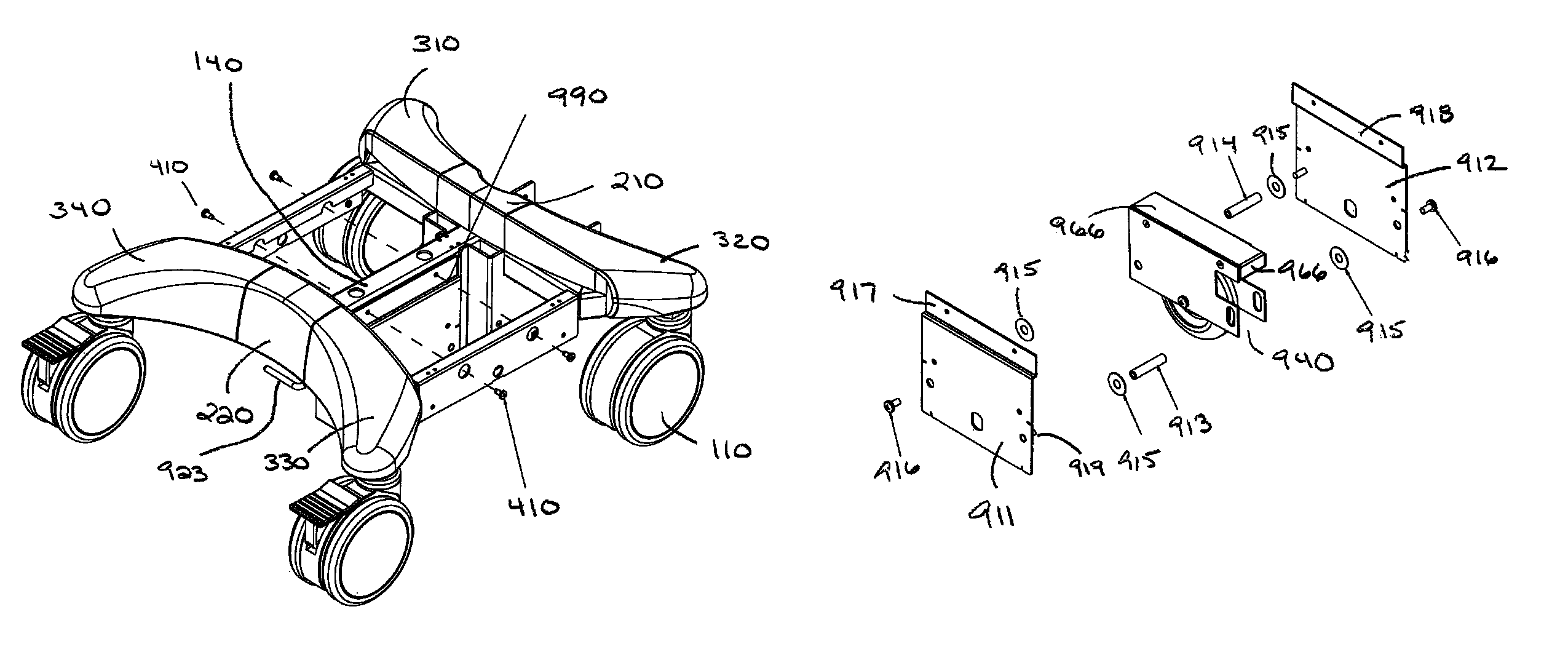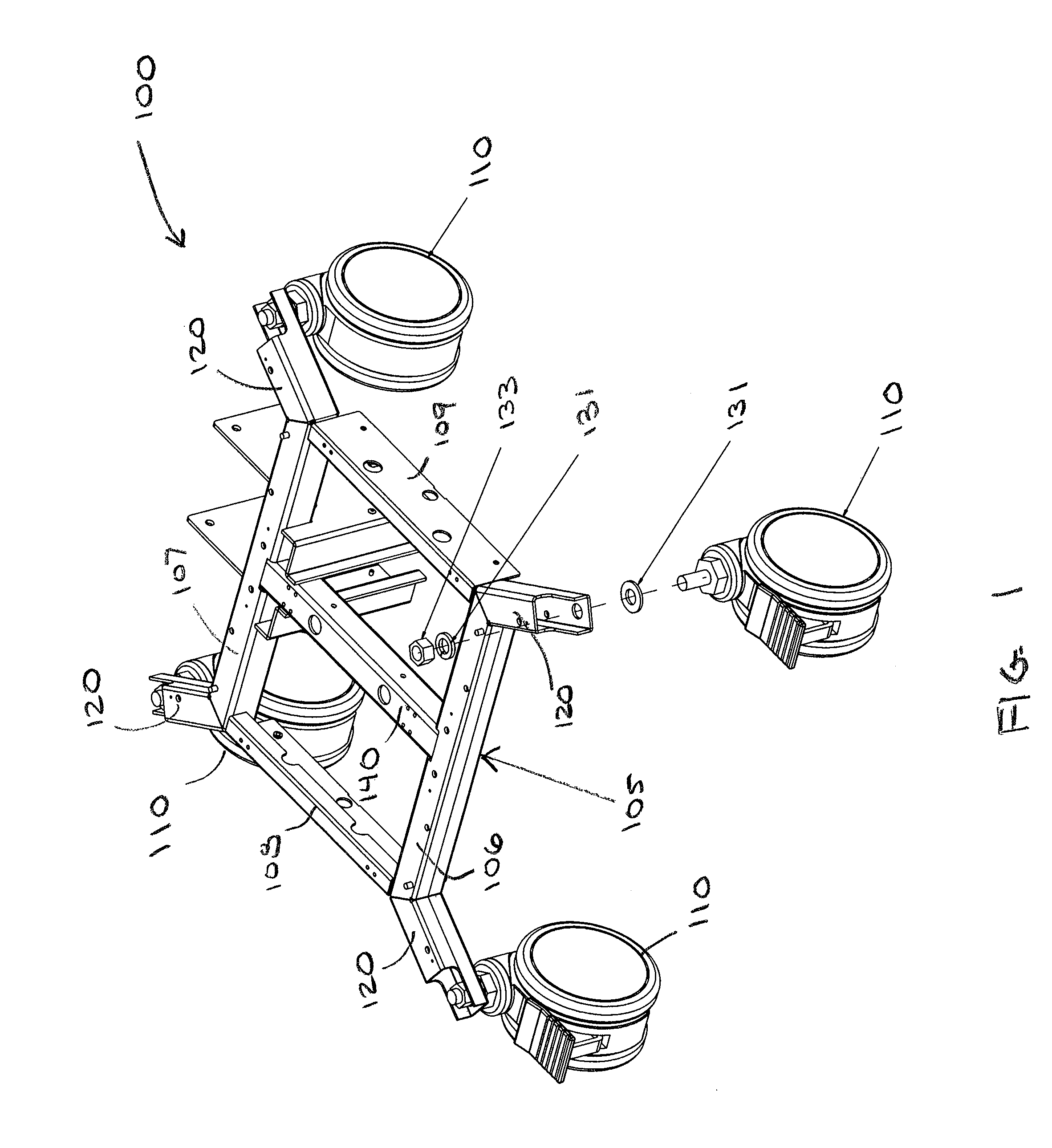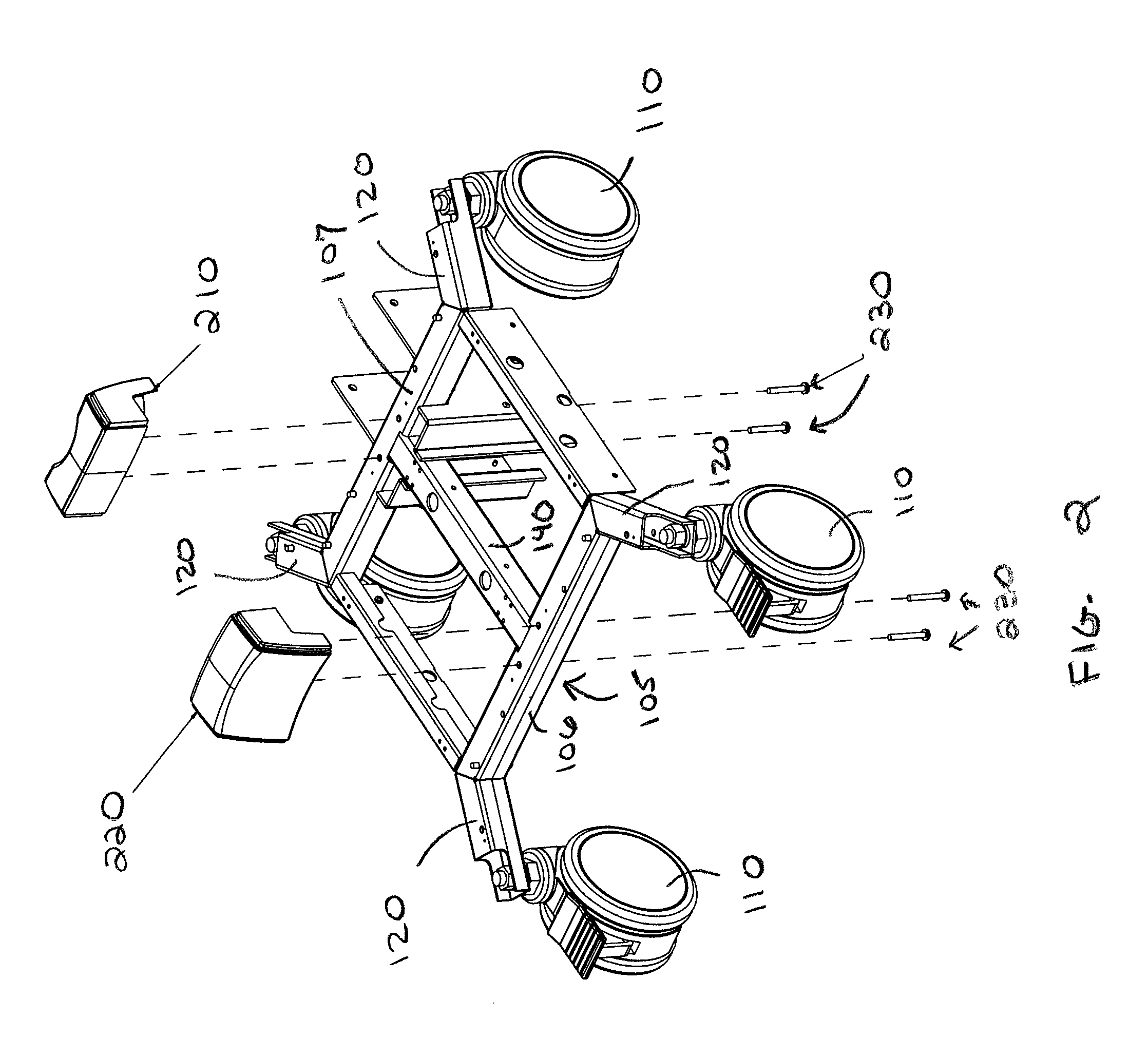Mobile cart base with traction wheel
a mobile cart and base technology, applied in the field of carts, can solve the problems of poor difficult steering of the cart, and difficulty in steering the cart, so as to improve the maneuverability of the cart, the effect of easy steering and stopping
- Summary
- Abstract
- Description
- Claims
- Application Information
AI Technical Summary
Benefits of technology
Problems solved by technology
Method used
Image
Examples
Embodiment Construction
[0041]I. Mobile Cart Base
[0042]With reference to FIGS. 1 through 8, in a preferred embodiment, mobile cart base 800 comprises a rolling base section 100 that includes a generally rectangular base frame 105 and four omni-directional, optionally locking swiveling casters or wheels 110. In alternate embodiments, mobile cart base 800 may include a generally elliptical base frame, or a base frame comprising three, four or more sides, and may have two, three or more swiveling wheels.
[0043]As shown in FIG. 1, base frame 105 comprises a front frame member 106, a rear frame member 107, two opposing side frame members, left side member 108 and right side member 109, and center frame member 140. In a preferred embodiment, base frame 105 includes four protruding legs 120, one protruding leg located proximate each corner of the base frame 105. Base frame 105 is preferably constructed of metal, although other materials, suitable for accommodating the weight of the mobile cart, are within the scop...
PUM
 Login to View More
Login to View More Abstract
Description
Claims
Application Information
 Login to View More
Login to View More - R&D
- Intellectual Property
- Life Sciences
- Materials
- Tech Scout
- Unparalleled Data Quality
- Higher Quality Content
- 60% Fewer Hallucinations
Browse by: Latest US Patents, China's latest patents, Technical Efficacy Thesaurus, Application Domain, Technology Topic, Popular Technical Reports.
© 2025 PatSnap. All rights reserved.Legal|Privacy policy|Modern Slavery Act Transparency Statement|Sitemap|About US| Contact US: help@patsnap.com



